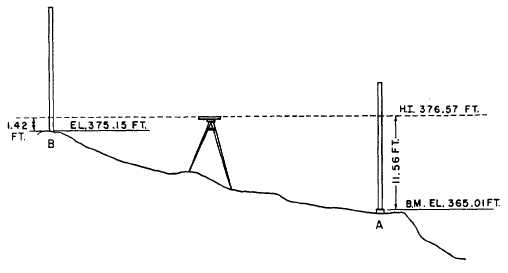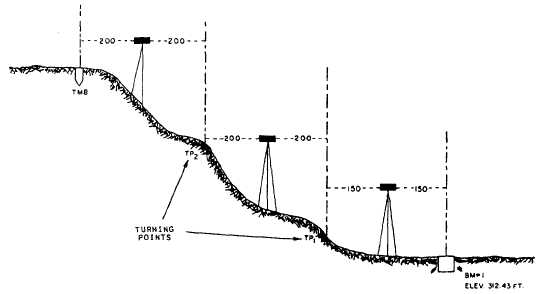as
Figure 14-11 .-Procedure for direct leveling.
Figure 14-12.-Turning points.
“Balancing shots” means equalizing as much
To balance distances for a setup, you will find
possible BS and FS distances by selecting
that using the same number of paces for BS as
turning points that are approximately an equal
distance from both the BS and FS points.
No matter how carefully you level a level
telescope, it is likely to be still slightly out of the
horizontal. The error this causes increases with
the length of the sight taken. If the BS distance
differs from the FS distance, the BS and FS
errors will also differ. If the distances are the
same, the errors will be the same. Balancing shots
therefore eliminates the effect of instrumental
error and also of curvature and refraction, other
errors that increase with distance.
for FS is helpful. In general, BS and FS distances
should be kept under 300 ft except when necessary
to pass or cross an obstacle.
Establishing Turning Points
Suppose you want to determine the elevation
of a point at the summit of a long slope, and the
nearest BM is at the foot of the slope some 30 ft
or so below the summit. Obviously, you cannot
sight a rod held on the BM and another held on
the summit from the same instrument setup point.
You must work up the slope in a series of steps,
as shown in figure 14-12, by establishing as many
14-11





